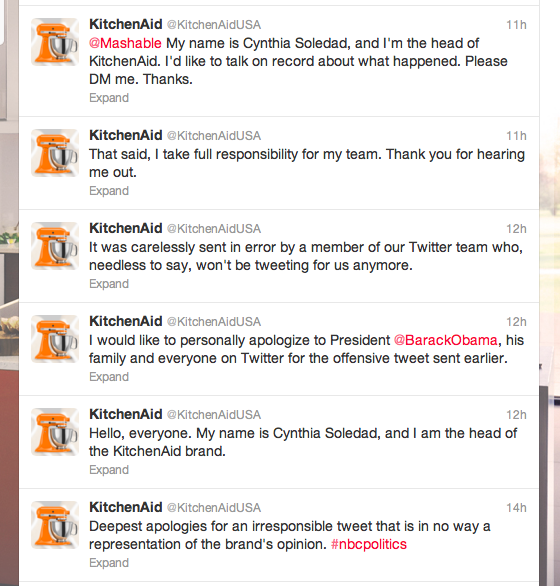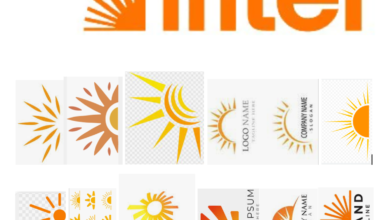[ad_1]
A brand crisis emerges like a flame in a forest. As soon as you see signs of trouble, you want to diffuse the problem immediately — or else it’ll spread into a huge, dangerous wildfire.
This is especially true in today’s fast-paced world of social media where conversations are fluid, transparent, and open for anyone to join. That’s why it’s important for your brand to have a plan in place to remedy anything from a trivial faux-pas to a serious disaster.
In this post, we’ll walk through four tips your brand can use to reverse a brand crisis. Plus, we’ll look at three brands who have successfully transformed brand disasters into brand opportunities — winning back their customers along the way.
Tip #1: Monitor your brand
It’s tough to respond to a crisis if you don’t know it’s there in the first place! To keep tabs on what people are saying about your brand, make sure to regularly check out your social media channels. You can also use tools like Google Alerts and Mention to monitor your brand perception in real-time.
Staying informed on the conversations surrounding your brand is crucial for preventing one negative interaction from becoming an all-out crisis. The quicker you react, the easier it’ll be to remedy.

Tip #2: Nail down your crisis plan
According to Burson-Marsteller, the brands that recover the fastest are the ones with well-documented policies.
Think about:
- Who is in charge should a crisis occur?
- Which tasks will each team member be responsible for?
- What platforms will you respond on?
- What will you say, and how will you say it?
Create your crisis plan based on the answers to these questions. This way, your team can respond quickly and effectively if anything were to happen.
KitchenAid is an excellent example of a brand who quickly addressed a company blunder and prevented it from becoming a full-blown crisis. A few years ago, an offensive, politically-charged tweet was accidentally posted on the company’s official Twitter account. It read:

As you can imagine, a Twitter storm broke out reprimanding the disrespectful tweet about POTUS’ grandmother. Just eight minutes after the rogue tweet was sent, KitchenAid issued an immediate apology on Twitter, led by Global Director of Marketing, Cynthia Soledad.

In addition to posting a sincere, compassionate apology to KitchenAid’s Twitter followers, Soledad also tweeted a public apology to Obama, and sent official statements to publications like Mashable.
This head-on response garnered acceptance from the social media community, and KitchenAid’s brand remains untarnished today. Clearly, KitchenAid’s top-down, transparent response on social media was successful in regaining control and resolving the situation.
Tip #3: Choose your conversations wisely
As a general rule of thumb, you’ll want to respond to the issue on the platform where it first started. However, you may come across people who just want to rant. If there’s a dialogue that’s purely emotional or filled with unnecessary anger, it may be best to just listen.
Your plan devised in Tip #2 will come in handy here. If your response to those heated conversations doesn’t align with the tone and messaging of your crisis plan, consider opting out of that conversation.
For example, Chipotle addressed their recent E.coli crisis with a dedicated webpage and a letter from the founder outlining their overhauled food safety plan. They also published open letters to customers in Seattle and Portland-area newspapers (where the outbreak was worst), and posted numerous official blog posts on Chipotle’s continued efforts to improve food safety.

Notice how these statements were communicated through respected publications and official letters, instead of social media platforms. Chipotle wisely matched the gravity of the situation with the seriousness of their communication platforms — and appeased customers that were still angry with free burritos.
Tip #4: Speak your audience’s language
When it comes down to your brand’s actual response, make sure it’s not only genuine, but it also matches the tone of the platform and language of your audience. Addressing a crisis in an authentic way can showcase your company’s values, shape your brand perception, and win back your audience’s approval.
My personal favorite example of a successfully reversed brand crisis is by Reese’s Peanut Butter Cups. During the last holiday season, Reese’s introduced the festive Reese’s Tree — which in actuality, looked nothing like trees.

Photos of blob-like chocolate accompanied with angry captions went viral on Twitter — an embarrassing situation for any brand. But, Reese’s was unfazed. They responded with a brilliant and hilarious #AllTreesAreBeautiful campaign that celebrated the shapes of their chocolate trees, and demonstrated against “tree shaming.”

Reese’s response had an overwhelmingly positive reaction, earning them laudable press and delighted customers.

Reese’s #AllTreesAreBeautiful initiative goes to show that injecting humor into a response can be a great way to diffuse a crisis. Because candy is a “fun” product, and the crisis had no real detriment to anyone’s health or safety, a funny campaign driven primarily through Twitter was the perfect response.
A brand crisis can be scary, but with the right procedures in place, you can turn a brand crisis into a great opportunity. Make sure to tailor these tips to your individual situation and unique audience — and finally, don’t forget to to breathe! With a brand crisis plan, you can rest easy knowing you have the tools to extinguish a fire before it gets out of hand.
Source link






